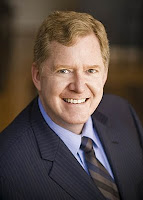-
Who Does Development? Civil-Military Relations (Part I)
July 27, 2009 By Dr. Gene BonventreIn the first decade of the new millennium, the relationship between the Department of Defense and civilian governmental agencies and NGOs has been a rollercoaster ride. At the high point of civil-military cooperation—the response to the Kurdish refugee crisis after the first Iraq war—the U.S. military provided security, access, and logistics, while USAID and NGOs provided direct assistance and expert advice to the 800-pound uniformed gorilla.
However, the hastily planned and executed toppling of the Taliban regime in Afghanistan was followed by an insurgency that targeted an increasing number of aid workers for execution. The “humanitarian space” that NGOs need to assist the most vulnerable populations had shrunk to the point that Medecins Sans Frontieres withdrew from the country.
Civil-military relations sunk further into the abyss following the end of Saddam’s reign in Baghdad. Young military captains walked around with briefcases full of cash, but no experience on how best to spend it. A handful of civilians from State and USAID, mostly bunkered in the relative safety of the Green Zone, were handcuffed by outdated, inflexible, and complex contracting requirements and bureaucracy—and had only pennies to spend compared to the military.
Thankfully, the rollercoaster has begun its slow climb back up. Recently, InterAction sat down with the Secretary of Defense’s office to hammer out guidelines for the NGO-military relationship. These guidelines have formed the basis for productive dialogue and more specific guidelines in the field from Afghanistan to Sudan.
With a near-unanimous chorus of voices calling to rejuvenate civilian agency capacity, the time is right for to formally re-examine the civil-military relationship. The new consensus report produced by the Civilian-Military Relations Study Group for USAID is a firm step in that direction.
As one of two co-authors with a military background, I was outnumbered by civilian experts—a very welcome reversal of the usual ratio. Our communication was transparent, honest, and productive, despite (or maybe because of) the complete lack of military Powerpoint slides.
The report highlights USAID’s progress: fitting the right civilians into the right military exercises, and placing senior development advisors at every one of the Geographic Combatant Commands. But the DoD-USAID relationship is still dominated by the military: Civilians are plugged into a military system, rather than leading the way on development.
Obstacles abound, not the least of which is the lack of a USAID administrator for the last six months. Civilian and military resources and personnel will never be equal, so the trick becomes how to translate the work begun by USAID’s Office of Military Affairs (OMA) into an agency-wide consensus on USAID’s relationship with DoD.
USAID needs to become, in former USAID Senior Advisor Dayton Maxwell’s words, the “supported command” for development: one that can point the gorilla in productive directions and leverage its resources and global relationships. This is no small task, especially when the number of lawyers in the Pentagon exceeds the number of U.S. foreign service officers on the planet. It will take strong leadership from a revitalized USAID, which is comfortable with its own relationship with the State Department.
USAID’s implementing partners, the NGOs whose personnel risk their own lives daily to save others, will have to play a major role in shaping the direction of the civil-military path. It will be critically important to create a common interagency framework to measure progress—one that will build an evidence base for what works and what doesn’t—that will lift civil-military dialogue above the emotional plane towards a more factual realm.
It’s easy to be discouraged, considering the daunting challenge of keeping the rollercoaster on track. But now is the best time to hit the reset button on civil-military relations and figure out the best balance of the 3 D’s—defense, diplomacy, and development—to support global stability.
Dr. Gene Bonventre is a senior consultant who specializes in the intersection of global health and national security. Dr. Bonventre retired as a Colonel in the U.S. Air Force in October 2008, completing a 25-year career. In his final assignment he was a Senior International Health Policy Advisor in the Office of the Deputy Assistant Secretary of Defense for Partnership Strategy.
 A Publication of the Stimson Center.
A Publication of the Stimson Center.

 USAID convened
USAID convened 




